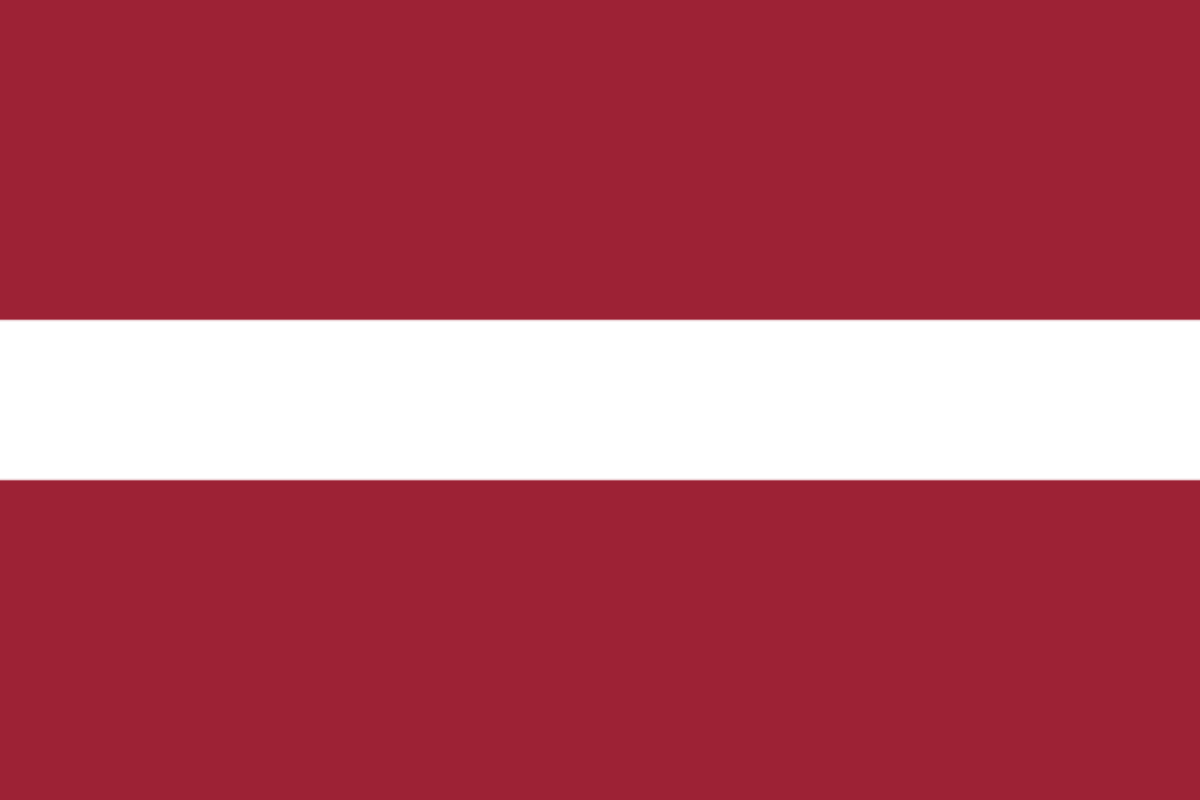The national animal of Lativa is the white wagtail. This is both the country’s national animal and its national bird. They are a key national symbol in Latvia and embody many aspects of both the nation’s symbolic values and also, more literally, of its natural beauty. They are instantly recognizable by their white plumage.
Latvian wildlife is fairly diverse with a great many animals both large and small, everything from bison and roe deer to beavers and lynx.
The wagtail, then, may seem like a humble choice among all these great beasts, but nonetheless the bird is in many ways a much more powerful symbol to the people of Latvia.
Let’s find out more.

What is the national animal of Latvia?
The national animal of Latvia is the white wagtail.
This bird is both the country’s national animal and its national bird, which goes to show just how important they are as a symbol to the people and nation of Latvia.
They are a small, passerine bird distributed widely across Europe and parts of Asia and North Africa.
They are, quite scarcely, sometimes found breeding in Alaska, too.
They tend to live in milder parts of their range and will typically migrate to Africa during the colder months.
They were first described among many other species of wagtail by Carl Linnaeus in his 1758 edition of Systema Naturae.
They still bear the scientific name he gave them, Motacilla alba.
They are most closely related, genetically, to other white and black wagtails like the Japanese wagtail or w the white-browed wagtail.
There are as many as ten major species of wagtail spread across most of the northern hemisphere.
They are slender, usually around 6.5 to 7.5 inches long and of course bear a long, wagging tail.
They generally weigh around 0.9 ounces, and usually live for around 12 years.
There are as many as 11 but sometimes nine recognized subspecies of white wagtail.
They breed throughout Eurasia, but also sometimes in the mountains of Morocco and, as mentioned, in Alaska.
They are not found in deserts but are otherwise present in a great range of habitats.
They are usually monogamous, and will defend their territories used for breeding. For most members of the species, they will breed from April to August, though the further north they are, the later the season will start.
Nest building is shared; the male is responsible for starting the nest and the female for finishing it.
Why is the white wagtail the national animal of Latvia?
The white wagtail holds importance to the people of Latvia for a variety of reasons.
They are seen as important symbols of freedom and liberation, as birds so often are.
They embody a free spirit and the ability to go and fly wherever you would like.
They are also seen as gentle, free spirits on the basis of their iconic tail wagging.
Animals with movements like this, apparently devoid of any clear purpose, have always been a fascination for people and so wagtails of many species have held this kind of folkloric importance to many cultures.
They have commonly featured on the stamps of Latvia.
They are also more literally seen as embodiments of Latvian natural beauty.
In a natural landscape with all sorts of deer, beavers, and even big cats like lynxes, the white wagtail nonetheless embodies another side of the natural spectrum of Latvian beauty.
They are the trees and the forests, and naturally embody the Latvian landscape.
Ultimately, though, you may get many different answers to this question depending on the person you ask.
They can mean many things to many people at many times, and thus there may not be any single reason for their position.
Where does the white wagtail live?
White wagtail, as mentioned, are spread over a very wide area, indeed most of Eurasia to some extent as well as North Africa and parts of North America.
They occupy a fairly large range of habitats, though, within that range.
They are not found in deserts, but otherwise can be found in forests, scrubland, grassland, and even in urban environments.
They are also common on coastlines and are fond of nesting in rocks and other similar environments near the coastline.
They live over such a wide range though they will move around with the seasons, being most common in Russia during the summer and further south in the winter.
What does the white wagtail eat?
White wagtails are insectivorous birds, meaning that they primarily if not exclusively eat insects.
Again, though, the diet will vary a great deal depending on precisely where they are.
They will eat both terrestrial and aquatic insects, as well as other small invertebrates, and this usually comprises the greatest part of their diet.
This could include spiders, worms, crustaceans, maggots from carrion, beetles, dragonflies, and flies.
Flies typically form the greatest part of their diet since they are so abundant.
During the winter, though, most wagtails will switch to a diet of vegetation when insects are harder to come by.
There are many species of wagtail spread far and wide across the world, but the white wagtail is one that is found over an almost equally wide range alone.
They are most concentrated in Europe, and so they have naturally become an important symbol to many people in countries like Latvia.
They have been important in Latvian folklore and symbolism for centuries, and so are now enshrined as its official national animal.

